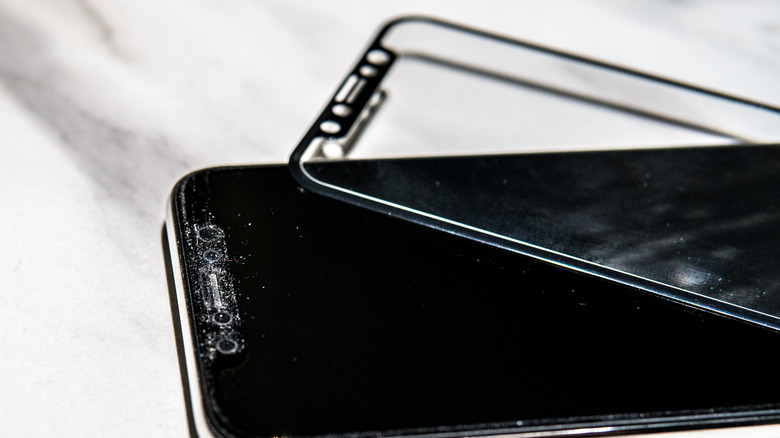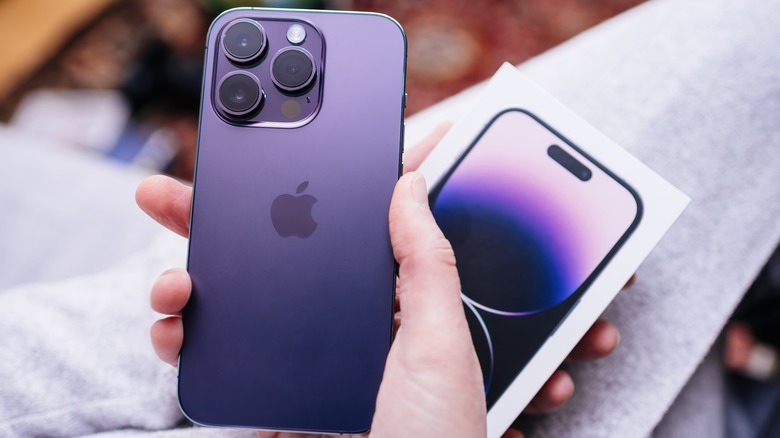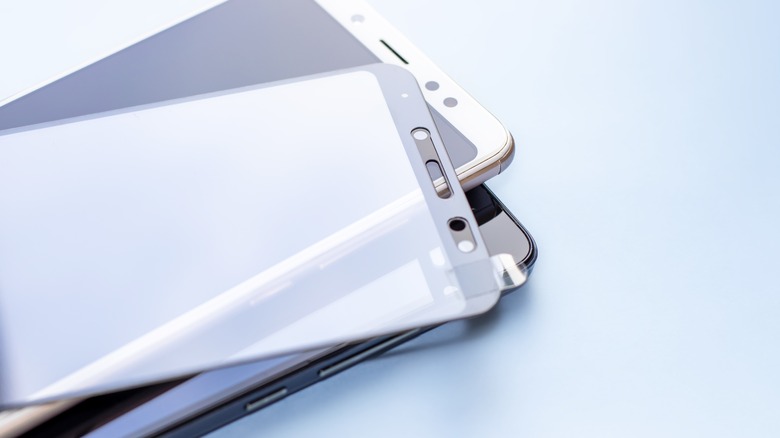Glass Vs Plastic Phone Screen Protectors: Which Is Actually Better?
We may receive a commission on purchases made from links.
Choosing the right phone screen protector is a big decision for many people, and there are two popular options to choose from. You can go for a glass screen protector that will essentially be like putting a screen on top of your current screen. The idea behind this is dropping your phone from a height that could crack your screen would instead crack the protective glass. If everything goes right, the protective glass will shatter instead of your actual screen. From there, you simply buy another protector instead of another phone.
You can also opt for a plastic screen protector. These are a much more low-key option as they are just a thin strip that goes over your screen. They will be good in protecting your phone from scratches but don't expect them to save your phone in the event of a nasty tumble. In the end, both types of phone protectors have their advantages, and a lot of it does come down to personal preference.
Glass or plastic screen protector?
If you're going for the most protection available, the glass screen protector is easily the best option for you. However, it does come with some downsides. The biggest difference between the two is price. A Belkin protector for the iPhone 15 Pro will cost you almost $40 from the Apple Store. With that price, you get the added peace of mind that your phone will be safe if it takes a tumble. You will most likely have to buy a new protector right away if the tempered glass cracks, however, as you don't want to keep on running your finger over a crack. The costs can run up quickly if you're clumsy.
On the other hand, a plastic screen protector for an iPhone 15 sells for about $8 on Amazon. The difference in price is quite large, but the plastic offering certainly won't save your screen from shattering or being cracked if you drop it. What you do get is some protection from scratches and a simple film that won't feel like it's ever in the way. If you trust yourself to be very careful with your phone, you can definitely get away with saving a bit of money on a screen protector.
A glass screen protector will also add noticeable thickness to your phone, but since it's made of the same material as your phone screen, it will feel the same when navigating. Plastic will add considerably less thickness, but it might have a stickier or gummier texture that should throw off the feel of swipes and taps.
Glass comes ahead -- but it's up to you
Protecting a big purchase is important, and if that means spending a few extra bucks then it's worth it to many people. For those, the glass screen protector is a bit of a no-brainer. However, some people could opt for a cheaper option after dropping $1,200 on an iPhone 15 Pro Max.
Many people are buying these screen protectors in the first place to keep their phone screen safe, and it's clear the glass protector is the winner there. The glass covering comes ahead in all safety categories, and they feel quite smooth once they're installed. The only real downside is how expensive they can be, especially if you have to keep on replacing them. Plastic screen protectors do still have their place, but that's really only to protect from scratches. If you have a durable phone case that protects your phone from landing directly on its screen after being dropped, you might still be able to get by just fine with the plastic offering.


